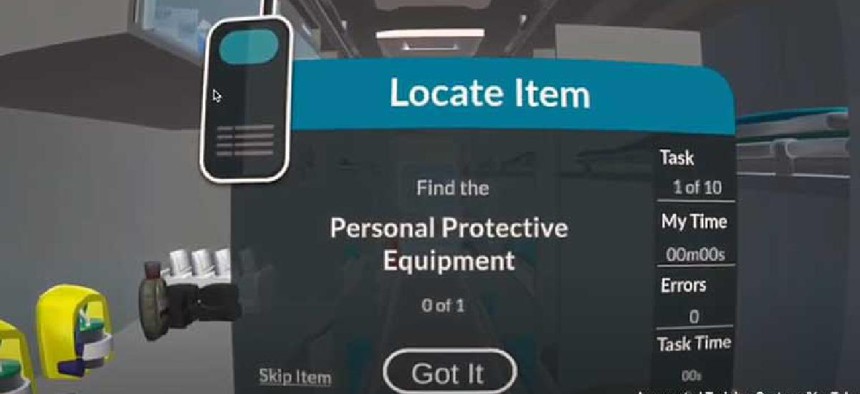How VR training keeps Austin EMTs sharp

After partnering with a local startup, the city has access to two virtual reality training programs that focus infrequent events where large numbers of injured require significant attention.
Because mass casualty training is expensive and difficult to schedule, emergency medical technicians in Austin, Texas, use virtual reality (VR) to keep their skills sharp.
Partnering with local startup Augmented Training Systems, the city now has access to two virtual reality training programs that focus infrequent events where large numbers of injured require significant attention.
EMTs train once or twice a year for these types of events, but “just in time VR training allows us to refresh those skills quickly, without needing the physical equipment or set-up,” said Commander Keith Noble, of Austin-Travis County Emergency Medical Services (ATCEMS). “We can do the training at the station, or at home, and can repeat the training over and over.”
During the pandemic, VR training became even more relevant. Even as in-person events were cancelled, for first responders, “it’s not an option to postpone training,” Noble said. “This technology is a good fit for today’s environment where we’re doing everything virtually. It’s safe and it’s effective.”
The VR training platform was developed through a public-private partnership between the city’s Communication and Technology Management department and ATCEMS. It was funded by a grant from US Ignite, a federal initiative to promote innovate city services powered by new technologies. CTM data architect Ted Lehr brought together researchers from Texas State University and ATCEMS to build a VR training option.
Augmented Training Systems, which was born out of the collaboration, now offers virtual training for EMS teams learning to work on a bus-sized ambulance and responding to mass casualty events. With the VR training EMS staff gain familiarity with the Ambus systems, and learn how to efficiently triage a large number of individuals.
“The platform allows you to track training and accuracy of performance. It also introduces elements of gamification and repetition, both of which help with knowledge retention and skill recall,” Augmented Training Systems President Scott Smith said.
Medics that trained with VR “showed a higher recall of skills and mission-critical tasks, a reduction in errors, and a decrease in time it took to complete a task” versus those who only took in-person training, Austin officials said.
This VR platform can improve training, “especially when added to physical trainings, Lehr said. “It can be done more frequently, more cheaply, and at the convenience and even desire of the first responders.”





